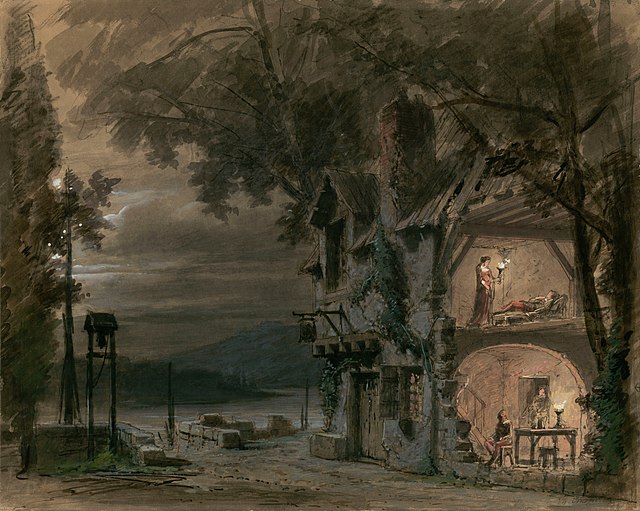Content deleted Content added
Line 1: {{two other uses|the opera|the children's film|Rigoletto (film)|the film based on the original opera|Giuseppe Verdi's Rigoletto Story}} {{Infobox opera | name = ''Rigoletto''
| genre_header = Opera | composer = Giuseppi Verdi | native_name = | native_name_lang = | image = [[File:Caruso as Rigoletto-sans Theatre.png|200px]] | | caption = [[Enrico Caruso]] in the role of the Duke | other_name = | librettist = [[Francesco Maria Piave]] | language = Italian | based_on = [[Victor Hugo]]'s play ''[[Le roi s'amuse]]'', 1832 | premiere_date = {{Start date|1850|03|11|df=y}} | premiere_location = {{Nowrap|[[Teatro La Fenice]], Venice}} }} '''''Rigoletto''''' is an [[opera]] in three acts by [[Giuseppe Verdi]]. The Italian [[libretto]] was written by [[Francesco Maria Piave]] based on the play ''[[Le roi s'amuse]]'' by [[Victor Hugo]]. Despite serious initial problems with the Austrian censors who had control over northern Italian theatres at the time, the opera had a triumphant premiere at [[La Fenice]] in Venice on 11 March 1851. Line 19 ⟶ 33: == Performance history == [[File:Felice Varesi.jpg|thumb|150px|left|[[Felice Varesi]], the first Rigoletto]]▼ '''19th-century productions''' ▲[[File:Felice Varesi.jpg|thumb|150px|left|[[Felice Varesi]], the first Rigoletto]] [[File:Teresa Brambilla 1845.jpg|150px|thumb|left|[[Teresa Brambilla]], the first Gilda, c. 1845]] ''Rigoletto'' premiered on 11 March 1851 in a sold-out La Fenice as the first part of a double bill with [[Giacomo Panizza]]'s ballet ''Faust''. Gaetano Mares conducted, and the sets were designed and executed by Giuseppe Bertoja and Francesco Bagnara.<ref>Casaglia (2005)</ref> The opening night was a complete triumph, especially the ''scena drammatica'' and the Duke's cynical [[aria]], "[[La donna è mobile]]", which was sung in the streets the next morning<ref name="Downes">Downes (1918) pp. 38–39</ref> (Verdi had maximised the aria's impact by only revealing it to the cast and orchestra a few hours before the premiere, and forbidding them to sing, whistle or even think of the melody outside of the theatre).<ref name="Downes"/><ref>{{cite web|last=Rahim|first=Sameer|title=The opera novice: Rigoletto by Giuseppe Verdi|url=http://www.telegraph.co.uk/culture/music/opera/9183265/The-opera-novice-Rigoletto-by-Giuseppe-Verdi.html|publisher=''The Daily Telegraph'' (London) 3 April 2012|accessdate=9 March 2013}}</ref> Many years later, Giulia Cora Varesi, the daughter of Felice Varesi (the original Rigoletto), described her father's performance at the premiere. Varesi was very uncomfortable with the false hump he had to wear; he was so uncertain that, even though he was quite an experienced singer, he had a panic attack when it was his turn to enter the stage. Verdi immediately realised he was paralysed and roughly pushed him on the stage, so he appeared with a clumsy tumble. The audience, thinking it was an intentional gag, was very amused.<ref>Kimbell (1985) p. 279</ref> Line 33 ⟶ 47: == Roles == [[File:Rigoletto premiere costumes for the Duke and Gilda.jpg|thumb|250px|Costumes for the Duke of Mantua and Gilda published by [[Casa Ricordi]] shortly after the 1851 premiere]] {| class="wikitable" !Role | |||
 Article Images
Article Images